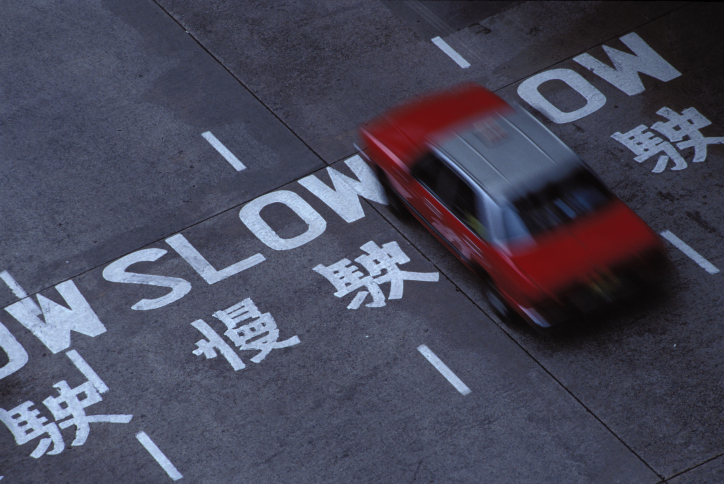Banking, finance, and taxes
Why Japan's 7.7% Move Higher Is a Dead Cat Bounce
Published:
Don’t be fooled by Japan’s frantic 7.7% rally Tuesday. Headlines are screaming that this is the largest rally since October 2008. That may be true, but this is most likely a bull trap that is short term in nature and will reverse itself relatively quickly. The reason is that all monetary indications point to another leg down, and there were no fundamental reasons for the Nikkei’s huge gains Tuesday. Source: Thinkstock
Source: Thinkstock
Investors of all stripes should be very careful playing volatile moves like this in any direction in any market. Let’s not forget that the bear market of 2008 saw multiple spectacular moves in the Nikkei, four of them even higher on a percentage basis than Tuesday’s 7.7% gains, and all concentrated in the same month of October, 2008. Keep in mind though that the record down day for Japan’s Nikkei also took place in the same month when on October 14, Japanese equities were down a stunning 12.4% in a single day.
The reason this big move is most likely a trap is that Japan’s money supply is still stagnating. No matter how much money the Bank of Japan (BOJ) tries to print through Abenomics and record-breaking stimulus, it just is not making it into the money supply.
The yen supply last reported by the BOJ effective for August came out to ¥912.3 trillion. Three months ago in May it totaled ¥906.7 trillion. On a yearly basis that is a 2.4% increase, which is comparatively a very low rate of money supply increase. Last month, the yearly rate clocked in at 3.2%, which means we are slowing down month over month.
ALSO READ: In Criticizing China for Devaluation, Jack Lew Reveals His Own Confusion
So where is all the money going from all the Abenomics money printing, and when will the decline be over? To answer the first question, almost all the newly printed yen are going into excess reserves that sit unloaned outside the banking system and economy. We can crudely call this a form of monetary constipation, and Japan has an extremely acute case of it.
As of the latest available numbers for June, the Bank of Japan reported ¥8.7 trillion in required reserves. At the same time, the BOJ last reported ¥206.6 trillion in total reserves for August 2015. This puts excess reserves at an astonishing ¥198 trillion. Given Japan’s average required reserve ratio of 0.75%, this puts the maximum monetary expansion potential at ¥26.4 quadrillion once all those excess reserves get loaned out.
This will not happen immediately, but regardless, when decimal points represent hundreds of trillions of anything, you have long ago overstepped the bounds of normalcy.
No matter how much the Bank of Japan prints, almost all of it will keep heading into excess reserves outside the economy, and the more this happens, the slower the rate of ultimate increase in the yen supply will be. This is also why Japanese inflation is continuing to stall.
The only way this will change is of the BOJ decides to lower the interest rate it pays its member banks to hold excess reserves. If that rate is lowered, banks will have more of an incentive to try and loan that money out. If it goes negative, the incentive to loan it out at any rate will be even greater.
ALSO READ: 7 Countries Near Bankruptcy
This very issue came up Wednesday, September 9, when Reuters reported that BOJ board member Sayuri Shirai commented on the possibility of lowering rates on excess reserves, possibly even to negative territory, saying it could not be ruled out. Even for an extremely expansionary central bank like the BOJ, Shirai admitted that this could be dangerous and “harm the intermediary function of financial institutions.” That is central bank-speak for financial crisis.
If there is any news that the BOJ has decided to lower that key rate to zero or even to negative, that would be the time to buy Japanese stocks and hedge against a rapidly falling yen. Until that time, it seems that the Japanese money supply will continue to stagnate, and the Nikkei will continue to fall.
If you want your portfolio to pay you cash like clockwork, it’s time to stop blindly following conventional wisdom like relying on Dividend Aristocrats. There’s a better option, and we want to show you. We’re offering a brand-new report on 2 stocks we believe offer the rare combination of a high dividend yield and significant stock appreciation upside. If you’re tired of feeling one step behind in this market, this free report is a must-read for you.
Click here to download your FREE copy of “2 Dividend Legends to Hold Forever” and start improving your portfolio today.
Thank you for reading! Have some feedback for us?
Contact the 24/7 Wall St. editorial team.